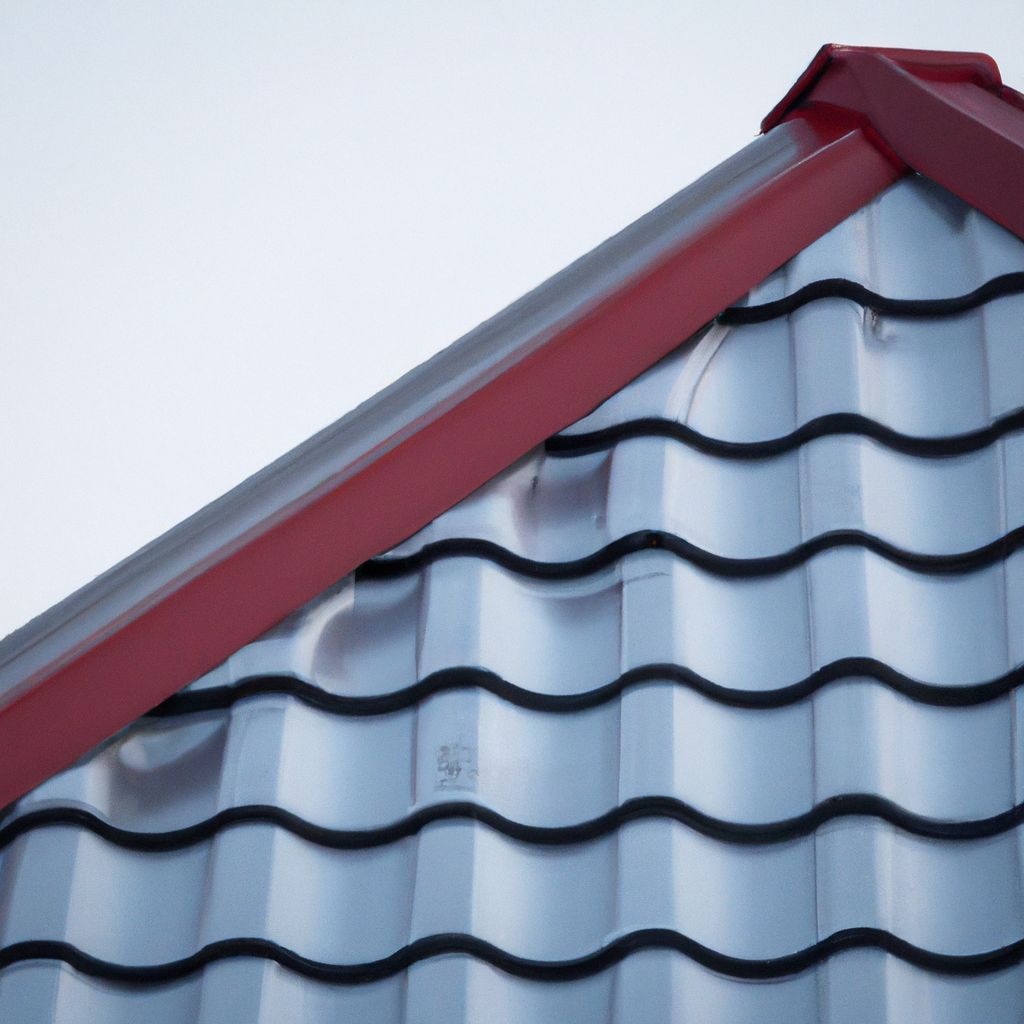Are you wondering when is the optimal time to get your roof repaired or replaced? Well, look no further! In this article, we will explore the question: what is the best time of year for roofing? Whether you are planning a major roofing project or simply need some minor repairs, understanding the ideal time to tackle these tasks can make a significant difference in terms of cost, convenience, and overall results. So, let’s explore the various factors that come into play when determining the best time to work on your roof.
Spring
Warmer Weather
Spring is a wonderful time of year for roofing projects for several reasons. Firstly, the warmer weather provides optimal conditions for working on the roof. It’s much more pleasant to be outside and work on a roof when the sun is shining and the temperatures are mild. The snow and ice of winter have melted away, making it safer to access the roof and navigate around. With the long, cold days behind you, you can look forward to spending time outdoors with a cool breeze while roofing.
Fewer Delays
Another advantage of spring for roofing is that there are generally fewer delays compared to other seasons. Spring weather tends to be more stable and predictable, with fewer rainstorms or extreme weather conditions that can interrupt roofing projects. This means that contractors can stay on schedule and complete the project in a timely manner. Additionally, with the longer daylight hours, there is more time available to work on the roof each day, maximizing productivity and reducing the chances of project delays.
Ideal for Asphalt Shingles
Spring is particularly well-suited for roofing projects that involve asphalt shingles. The mild temperatures allow the shingles to properly seal and bond together, ensuring a sturdy and long-lasting roof. In hotter temperatures, the shingles can become too soft and may not adhere properly, while colder temperatures can make them brittle and prone to cracking. With the ideal weather conditions of spring, you can have confidence that your asphalt shingles will be installed correctly and provide excellent protection for your home.
Summer
Longer Work Days
Summer is a popular time for roofing projects due to the longer daylight hours. With more daylight available, contractors can work for extended hours each day, maximizing productivity and getting the job done more quickly. This can be especially advantageous for larger or more complex roofing projects that may require more time and effort. The longer work days of summer allow contractors to complete the job efficiently, so you can start enjoying your new roof sooner.
Fast Installation
In addition to the longer work days, the warm temperatures of summer also contribute to fast installation. The heat allows materials to dry and set quickly, which means less time waiting for things to cure or harden. This can significantly reduce the overall duration of the project, minimizing any inconveniences or disruptions to your daily life. With a swift and efficient installation during the summer months, you can have peace of mind knowing that your home is protected from the elements.
Great for All Roofing Materials
Summer is an excellent time for any type of roofing material. Whether you choose asphalt shingles, metal roofing, or clay tiles, the warm temperatures and dry weather create optimal conditions for installation. The materials have a better chance of properly adhering and setting, ensuring a strong and durable roof. Additionally, any sealants or coatings used during the installation process will bond more effectively in the summer heat. With a wide range of roofing materials to choose from, you can find the perfect option to suit your needs and preferences.

Fall
Mild Weather
Fall is a season known for its mild and comfortable weather conditions, making it an ideal time for roofing projects. The temperatures are cooler, but not too cold, creating a pleasant working environment for roofing contractors. Additionally, the moderate temperatures ensure that the roofing materials will not be affected by extreme heat or cold, allowing for proper installation and setting. The comfortable weather in the fall can make the roofing process smoother and more enjoyable for everyone involved.
Less Rain
Another benefit of roofing in the fall is the reduced likelihood of rain. Unlike the spring and summer months, which often experience frequent rain showers or thunderstorms, fall tends to have drier weather conditions. This means that there is less chance of rain delaying the roofing project or causing damage to the roof during installation. With fewer interruptions from rain, contractors can work more consistently and efficiently, completing the project on schedule.
Preparation for Winter
Roofing in the fall is also a smart choice because it allows you to prepare your home for the upcoming winter season. By installing a new roof or making necessary repairs in the fall, you can ensure that your home is well-protected from the harsh winter weather. A sturdy and well-maintained roof will prevent leaks, ice dams, and other winter-related issues that can lead to costly repairs and energy loss. Taking care of your roof in the fall will give you peace of mind throughout the winter months, knowing that your home is secure and well-insulated.
Winter
Discounted Prices
One of the advantages of roofing in winter is the potential for discounted prices. Since roofing companies tend to have less demand during the winter months, they may offer discounted rates or special promotions to attract customers. This can save you money on your roofing project, making it a more affordable option. It’s important to note that while winter discounts can be enticing, it’s crucial to choose a reputable and experienced roofing contractor who can ensure high-quality work, regardless of the discounted price.
Availability
Another benefit of winter roofing is the increased availability of roofing contractors. With less demand during the winter months, contractors may have more flexibility in their schedules and be able to accommodate your roofing project sooner. This can be especially advantageous if you have an urgent roofing issue that needs to be addressed promptly. By taking advantage of the availability of contractors in the winter, you can get your roof repaired or replaced quickly and efficiently.
Specialized Roofing Materials
If you live in an area that experiences harsh winter weather conditions, winter may be the best time to invest in specialized roofing materials. Some materials, such as metal roofs or synthetic slate, are designed to withstand extreme temperatures, heavy snow loads, and other winter-related challenges. By choosing these materials and having them installed in the winter, you can ensure maximum protection for your home during the cold months. It’s essential to consult with a roofing professional to determine the best materials for your specific climate and needs.

Considerations for Different Climates
Hot Climates
In hot climates, it’s important to consider the extreme temperatures when scheduling roofing work. The intense heat can make working on the roof uncomfortable and even dangerous. Therefore, it’s best to avoid scheduling roofing projects during the hottest months of the year. Instead, opt for cooler seasons like spring or fall when the temperatures are more tolerable. Additionally, choose roofing materials that are specifically designed to withstand high temperatures and UV exposure, such as metal roofs or light-colored shingles that reflect heat.
Cold Climates
If you live in a cold climate, it’s crucial to take into account the freezing temperatures and potential snow accumulation when planning your roofing project. Winter may not be the best time for installation or repairs, as the cold weather can make it difficult for materials to properly adhere and set. It’s generally recommended to schedule roofing work during the milder months of spring or fall, but if winter is unavoidable, ensure that your contractor has experience working in cold climates and is using materials suitable for low temperatures.
Wet Climates
In wet climates with frequent rain or high humidity, it’s essential to consider the impact of moisture on your roofing project. Rain can disrupt the installation process and lead to delays or damage to the roof. It’s best to avoid scheduling roofing work during the rainy season and opt for drier months instead. Additionally, choose roofing materials that are resistant to water damage and have proper waterproofing measures in place, such as adequate underlayment and flashing.
Dry Climates
In dry climates, extreme heat and lack of rainfall can pose their own challenges for roofing projects. The intense heat can affect the installation process and the performance of certain materials. It’s important to choose materials that are designed to withstand the high temperatures and UV exposure commonly found in dry climates. Additionally, consider scheduling roofing work during the cooler months to avoid the peak of the hot season.
Factors to Consider When Scheduling Roofing Work
Weather Conditions
When scheduling roofing work, weather conditions play a crucial role. It’s important to consider the climate of your area and choose a time when weather conditions are favorable for roofing projects. Avoid scheduling work during extreme heat, heavy rain, or snowstorms, as these conditions can significantly impact the installation process and the durability of the roof. Opting for milder seasons with more predictable weather patterns will help ensure a smoother and more successful roofing project.
Contractor Availability
Another factor to consider when scheduling roofing work is the availability of contractors. It’s essential to choose a reputable and experienced roofing contractor for your project, but they may be in high demand during certain seasons. It’s advisable to reach out to contractors well in advance to secure their availability and avoid any scheduling conflicts. By planning ahead and coordinating with your chosen contractor, you can ensure that your roofing project is completed on time and to your satisfaction.
Seasonal Demand
Seasonal demand for roofing work can also affect scheduling. Certain seasons, like spring and fall, tend to be busier for roofing contractors due to the favorable weather conditions. This increased demand may result in longer wait times or higher prices. If you’re flexible with your timing, opting for the offseason or less busy months can potentially save you money and ensure quicker availability of contractors. However, it’s essential to thoroughly research and choose a reputable contractor regardless of the season.
Personal Schedule
Lastly, your personal schedule and availability should be taken into account when scheduling roofing work. Plan the project at a time when it least interferes with your daily routine and commitments. If you have other home improvement projects or events coming up, it’s important to consider how they may align or clash with the roofing project. By selecting a timing that works well with your schedule, you can ensure a smoother transition and minimize disruptions during the roofing process.

Roof Maintenance Tips for Every Season
Spring Maintenance
In the spring, it’s important to perform regular maintenance tasks to ensure your roof is in good condition after the winter months. Start by inspecting the roof for any signs of damage, such as loose or missing shingles, damaged flashing, or clogged gutters. Clean out any debris that may have accumulated in the gutters and downspouts, as this can lead to water damage and leaks. Trim back any overhanging branches that may pose a risk to the roof. Finally, check the attic for signs of water intrusion or pests and address any issues promptly.
Summer Maintenance
During the summer, focus on keeping your roof well-maintained and protected from the sun’s intense heat. Inspect the roof for any signs of wear or damage and address them promptly. Clean the gutters regularly to prevent them from becoming clogged with debris. Ensure that the attic is properly insulated and ventilated to prevent heat buildup and excessive energy costs. Additionally, trim back any overgrown vegetation that may pose a risk to the roof and regularly check for signs of pests or critters.
Fall Maintenance
Fall is an excellent time to prepare your roof for the upcoming winter season. Start by cleaning the gutters and downspouts to remove any leaves or debris that may block the flow of water. Inspect the roof for any signs of damage, such as loose or damaged shingles, and address them promptly. Check the flashing around chimneys and vents to ensure they are properly sealed. Finally, consider scheduling a professional inspection to identify any hidden issues that may require attention before winter arrives.
Winter Maintenance
Even during the winter months, it’s important to perform basic maintenance tasks to keep your roof in good condition. Remove any snow accumulation from the roof to prevent excessive weight and the formation of ice dams. Use a roof rake or a broom with a long handle to safely clear the snow without damaging the roof. Inspect the roof after severe weather events, such as snowstorms or heavy winds, and address any visible damage promptly. Additionally, ensure that the attic is properly insulated to prevent heat loss and ice dam formation.
Special Considerations for Emergency Roofing
Emergency Repairs
In the event of a roofing emergency, such as a severe storm or a fallen tree, it’s crucial to address the issue promptly to prevent further damage to your home. If you notice a significant leak or a large section of the roof has been damaged, contact a professional roofing contractor immediately. They will assess the situation and provide you with the necessary emergency repairs to secure the roof and prevent further water intrusion or structural damage.
Temporary Solutions
If immediate repairs are not possible or if you need a temporary solution until a permanent fix can be implemented, there are a few options available. You can use tarps or plastic sheeting to cover the damaged area and prevent water from entering your home. Ensure that the covering is properly secured to the roof to withstand wind or rain. Additionally, you can use roofing cement or sealant to temporarily seal small leaks or gaps. However, it’s important to note that these temporary solutions should not replace permanent repairs and should only be used as a temporary measure.
Postponing Permanent Fixes
In some cases, it may be necessary to postpone permanent roofing fixes due to various circumstances, such as budget constraints or unfavorable weather conditions. While temporary solutions can provide immediate relief, it’s important to plan for permanent repairs as soon as possible to avoid further damage or potential safety hazards. Consult with a professional roofing contractor to assess the situation and develop a plan to address the issue in a timely manner.

Benefits of Roofing During the Best Time of Year
Efficiency and Productivity
Roofing during the best time of year allows for increased efficiency and productivity. Contractors can work longer hours and complete the project more quickly, minimizing disruptions to your daily life. The optimal weather conditions also contribute to faster installation and better bonding of the roofing materials, ensuring a sturdy and durable roof. By scheduling your roofing project during the best time of year, you can enjoy a smooth and efficient process from start to finish.
Long-Term Performance
By choosing the best time of year for roofing, you can maximize the long-term performance of your roof. Different seasons can have varying effects on roofing materials. For example, extreme temperatures or heavy rain can compromise the integrity of the roof if it is not properly installed or maintained. By scheduling your roofing project during the ideal season, you can ensure that the materials will be properly installed and have the best chance of withstanding the elements for years to come.
Warranties and Guarantees
Choosing to roof during the best time of year may also come with additional benefits, such as extended warranties or guarantees on the roofing materials and workmanship. Many manufacturers offer special promotions or warranties during certain seasons to encourage homeowners to invest in a new roof. By taking advantage of these offers and roofing during the ideal time, you can have added peace of mind knowing that your investment is protected and backed by the manufacturer’s warranty.
Conclusion
Choosing the best time of year for roofing is an important decision that can significantly impact the success and longevity of your roof. Each season has its advantages and considerations, and it’s essential to take into account factors such as weather conditions, contractor availability, and personal schedule when scheduling your roofing project. By understanding the benefits and challenges of each season, you can make an informed decision and ensure a smooth and efficient roofing process. Whether you choose spring, summer, fall, or winter, proper planning and maintenance are key to a durable and reliable roof for your home.
